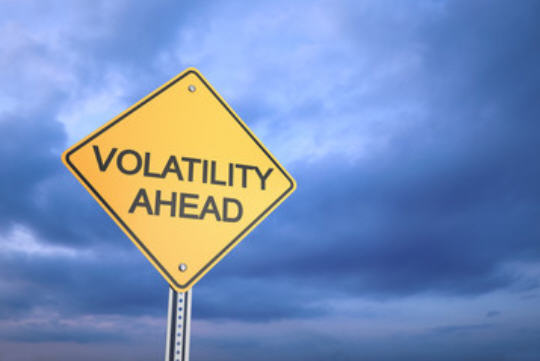Market Volatility: What should I do now?
Oct 25, 2018 • Written by Paul Staib | Certified Financial Planner (CFP®), MBA, RICP®
Blog Home » Asset Allocation » Market Volatility: What should I do now?

Stock markets have been choppy lately, pressured by all sorts of concerns – including tighter monetary policy, the impact of tariffs, and mid-term elections – to name a few.
Worrying excessively about a bear market is counterproductive but being prepared for one is always a good idea. It never hurts to develop an emergency kit for your portfolio.
Here are some steps all investors should consider:
- If you don’t have a financial plan, consider making one. A written financial plan can help you craft an appropriately balanced portfolio. It can also calm your nerves and make it easier to stay the course when markets get bumpy: According to a recent Schwab survey, 60% of people with a written financial plan said they felt prepared for a recession similar to the Great Recession of 2007-2009, compared with 30% of people without a plan.
- Review your risk tolerance. It’s relatively easy to take risks when the market is rising, but market downturns sometimes can be a wake-up call to consider adjusting your target asset allocation. Consider how much loss you have the emotional and financial capacity to weather. Ensure you have an appropriate asset allocation given your objectives, timeframe, and personality.
- Match your portfolio to your goals and investing timeframe. Market corrections can be especially upsetting if you don’t have time to recover or you’re not sure you’ll have enough cash to handle near-term goals. However, you can structure your portfolio to take some of the worry out of watching the markets. Money you expect to need within the next two years, or that you can’t afford to lose, should be in relatively stable short-term investments like bank savings accounts, certificates of deposit or Treasury bills. Money for long-term goals can be invested in potentially higher-growth, higher-risk assets like stocks, because you will have more time to recover from a downturn.
- Make sure you have a diversified portfolio. The old adage “don’t put all your eggs in one basket” is especially important advice for investors. A globally diversified portfolio – one that spreads its eggs across many baskets – tends to be better positioned to weather market swings and provide a more stable set of returns over time. Because a diversified portfolio is invested in many asset classes, it can benefit from owning top performers without bearing the full effect of owning the worst performers.
- Rebalance regularly. Market changes can skew your allocation from its original target. Over time, assets that have gained in value will account for more of your portfolio, while those that have declined will account for less. Rebalancing means selling positions that have become overweight in relation to the rest of your portfolio, and moving the proceeds to positions that have become underweight. It’s a good idea to do this at regular intervals.
Take your life stage into consideration
Your life stage also can affect your reaction to significant market downturns. For example:
- Younger/mid-career investor (typically 18-51 years old): If you’re a younger or mid-career investor saving for a goal that is still 15 or more years away, such as retirement, you should take advantage of your relatively long investment horizon. In short, you have time to recover, and you would generally do better to focus on your long-term goals rather than panicking about short-term market movements.
- Near retirement (typically 52-66 years old): The picture can change a bit for investors who are nearing retirement. If you’re in this age group, you probably have a more-established career than when you were younger, spend less, and focus on saving. Regular rebalancing and appropriate diversification are important for you at this stage, and your risk profile typically will become more conservative as retirement approaches.
- In retirement (typically age 67+): Retirees who are living off their savings, investments, pensions and Social Security benefits have unique needs. Portfolios for investors in retirement should be designed to support short- and intermediate-term spending needs, and to be sustainable throughout a retirement that could last 30 years or more. The typical retiree has a more conservative risk profile than younger investors, and should have a relatively larger allocation to defensive asset classes, such as bonds and cash investments.
It’s understandable to be nervous about the markets. But don’t let fear define your actions.

Paul Staib | Certified Financial Planner (CFP®), MBA, RICP®
Paul Staib, Certified Financial Planner (CFP®), RICP®, is an independent Flat Fee-Only financial planner. Staib Financial Planning, LLC provides comprehensive financial planning, retirement planning, and investment management services to help clients in all financial situations achieve their personal financial goals. Staib Financial Planning, LLC serves clients as a fiduciary and never earns a commission of any kind. Our offices are located in the south Denver metro area, enabling us to conveniently serve clients in Highlands Ranch, Littleton, Lone Tree, Aurora, Parker, Denver Tech Center, Centennial, Castle Pines and surrounding communities. We also offer our services virtually.
Read Next
2016 Tax Fast Facts For Investors
• Written By Paul Staib | Certified Financial Planner (CFP®), MBA, RICP®
It’s not hard to find tax information on the Internet – when quarterly taxes are due, 401(k) contribution limits, and…
5 Stealth Taxes That Can Impact Your Retirement
• Written By Paul Staib | Certified Financial Planner (CFP®), MBA, RICP®
Every year, an increasing number of retirees are impacted by one or more “stealth” taxes. While certain taxes may be…
